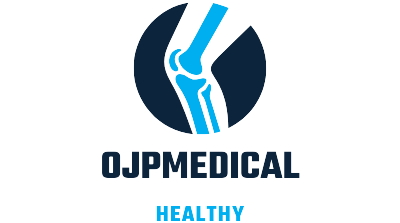In the dynamic field of dentistry, staying at the forefront of advancements in diagnosis, treatment, and professional skills is crucial for providing the best care for patients. Professional development, therefore, has become increasingly important in dentistry. This article aims to explore the growing significance of professional development in the dental industry, examining the key symptoms and causes of stagnation in dental practice, and exploring effective strategies and treatment options for advancing in the dental field. Whether you are a dental professional seeking to enhance your knowledge or a dental student looking to prepare for a successful career, this article will provide valuable insights into the world of professional development in dentistry.
1. "Understanding the Growing Importance of Professional Development in Dentistry"
In recent years, the field of dentistry has witnessed significant advancements and changes. From new diagnostic techniques to innovative treatment options, dentistry is constantly evolving. As a result, it has become imperative for dental professionals to stay updated with the latest developments in order to provide the best possible care for their patients. This is where professional development plays a crucial role.
Professional development refers to the continuous process of acquiring and enhancing the knowledge, skills, and competencies necessary for professional growth. In dentistry, it encompasses various aspects such as diagnosis, treatment, understanding symptoms, and identifying causes of dental conditions. With the ever-evolving nature of the field, dental professionals must keep abreast of the latest research, technologies, and techniques to offer the highest standard of care.
One of the key reasons why professional development is gaining increasing importance in dentistry is the rapid advancements in diagnostic tools and techniques. Dental professionals now have access to advanced imaging technologies such as cone beam computed tomography (CBCT) and digital radiography, which provide more accurate and detailed information about a patient’s oral health. However, understanding and effectively utilizing these tools require continuous learning and training.
Moreover, professional development in dentistry also involves staying updated with the latest treatment modalities and techniques. For example, the introduction of minimally invasive procedures and laser dentistry has revolutionized the way certain dental conditions are treated. Dental professionals need to stay updated with these advancements to provide the most effective and efficient treatment options to their patients.
Understanding symptoms and identifying causes of dental conditions are also crucial aspects of professional development in dentistry. Dental professionals must be able to recognize the signs and symptoms of various oral diseases and conditions to provide timely and accurate diagnoses. Continual learning and development enable dentists to enhance their diagnostic skills, ensuring early detection and appropriate treatment.
Furthermore, professional development in dentistry is essential for maintaining patient trust and satisfaction. Patients expect their dental professionals to be knowledgeable, skilled, and up-to-date with the latest advancements in the field. By investing in professional development, dental professionals demonstrate their commitment to providing the best possible care and staying at the forefront of dental practice.
In conclusion, professional development is of utmost importance in dentistry due to the continuous advancements in diagnosis, treatment, understanding symptoms, and identifying causes of dental conditions. Staying updated with the latest research, technologies, and techniques ensures that dental professionals can deliver the highest standard of care to their patients. Investing in professional development not only enhances the skills and knowledge of dental professionals but also contributes to patient trust and satisfaction. As the field of dentistry continues to evolve, it is imperative for dental professionals to embrace lifelong learning and development to provide optimal oral healthcare for their patients.
2. "Examining the Key Symptoms and Causes of Stagnation in Dental Practice"
In the realm of dentistry, professional development plays a vital role in ensuring the delivery of high-quality dental care to patients. However, like any other profession, dental practice can sometimes face stagnation, hindering the growth and progress of both individual practitioners and the field as a whole. Examining the key symptoms and causes of stagnation in dental practice is crucial to understanding the underlying factors that limit professional development and finding effective solutions to overcome them.
One of the primary symptoms of stagnation in dental practice is a lack of innovation and adaptation to new techniques and technologies. With advancements in dental procedures, materials, and equipment, it is imperative for dentists to stay updated with the latest developments. Failure to do so leads to a stagnant approach to treatment, limiting the scope of practice and hindering professional growth. A reluctance to embrace change and a lack of motivation to pursue continuing education can contribute to this symptom of stagnation.
Another symptom often observed in stagnant dental practices is a decrease in patient satisfaction and loyalty. Dentistry is a patient-centric profession, and patient satisfaction is essential for the success and growth of any dental practice. When dentists fail to provide personalized care, maintain effective communication, or address patient concerns adequately, it can lead to a decline in patient trust and loyalty. This symptom may manifest as a decline in the number of new patients, a decrease in referrals, or negative online reviews, all of which hinder professional development.
The causes of stagnation in dental practice are multifaceted. One major cause is complacency, where dentists become content with their existing knowledge and skills, failing to pursue further professional growth. This lack of motivation to improve can stem from a variety of factors, such as burnout, a lack of mentorship or guidance, or a fear of change. Additionally, external factors such as a competitive market, economic downturns, or limited resources can also contribute to stagnation in dental practice.
Furthermore, inadequate practice management and a lack of strategic planning can impede professional development. Dental practitioners must possess not only clinical skills but also business acumen to effectively manage their practices. Without proper management, dentists may struggle to attract new patients, retain existing ones, or optimize their practice’s efficiency and profitability. This can result in stagnation, preventing the growth and development of the practice and its professionals.
In conclusion, recognizing the symptoms and causes of stagnation in dental practice is crucial for facilitating professional development. Dentists must emphasize continued education, embrace innovation, and adapt to changes in the field to avoid becoming stagnant. Addressing symptoms such as a lack of innovation and decreasing patient satisfaction, as well as causes like complacency and inadequate practice management, can pave the way for growth, excellence, and success in the dental profession. By actively seeking opportunities for growth, dentists can ensure that their practices thrive and continue to provide optimal care to their patients.
3. "Exploring Effective Strategies and Treatment Options for Advancing in the Dental Field"
In the rapidly evolving field of dentistry, continuous professional development is crucial for dental professionals to stay up-to-date with the latest advancements and provide the best possible care to their patients. Effective strategies and treatment options for advancing in the dental field are constantly being explored to help dental professionals expand their knowledge, skills, and expertise.
One of the most effective strategies for professional development in dentistry is to pursue further education and specialization. This can be achieved through various means such as attending advanced courses, workshops, seminars, and conferences. These educational opportunities provide dental professionals with the chance to learn from experts in the field, gain new insights, and acquire advanced techniques and procedures. By staying abreast of the latest research and developments, dental professionals can enhance their ability to diagnose and treat dental conditions more effectively.
Another important aspect of professional development in dentistry is engaging in peer-to-peer learning and collaboration. Dental professionals can benefit greatly from networking with their peers, sharing experiences, and discussing challenging cases. This can be achieved through professional organizations, study groups, or online forums. By participating in these collaborative activities, dental professionals can broaden their perspectives, exchange knowledge, and gain valuable insights from their colleagues. This not only helps in improving their diagnostic and treatment skills but also fosters a sense of professional camaraderie within the dental community.
Further, dental professionals can explore mentorship opportunities to advance in their careers. Seasoned and experienced dentists can serve as mentors to guide and support younger dental professionals. Mentors can provide valuable advice, share their expertise, and offer guidance on career progression. By learning from mentors, dental professionals can gain insights into effective treatment strategies, professional ethics, and patient management. Mentorship programs enable dental professionals to establish meaningful connections and receive personalized guidance to excel in their careers.
Technological advancements play a significant role in the dental field, and staying updated with the latest technological innovations is crucial for professional growth. Dental professionals should explore and embrace modern tools, equipment, and techniques that can enhance their diagnostic abilities and treatment outcomes. Continuous learning and training in utilizing advanced technologies such as digital imaging, computer-aided design/computer-aided manufacturing (CAD/CAM), and laser dentistry can significantly improve a dentist’s practice and patient care.
In conclusion, professional development in dentistry is essential for dental professionals to thrive in their careers and provide optimal care to their patients. By exploring effective strategies and treatment options, such as further education, peer-to-peer learning, mentorship, and embracing technological advancements, dental professionals can continually enhance their diagnostic skills, treatment outcomes, and overall professional competence. Continuous learning and growth in the dental field not only benefit the individual dental professional but also contribute to the advancement of the dental profession as a whole.

